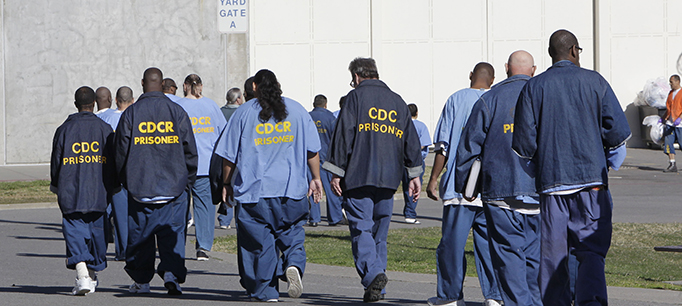The passage of Proposition 57 brings significant changes to California’s criminal justice system. At the same time, the initiative lacks specificity and there is great uncertainty about what its impact might be.
The measure increases the chances for parole of felons in state prison who are convicted of nonviolent crimes and expand inmates’ opportunities to earn credits for good behavior. This loosening of parole rules will ease prison overcrowding through the early release of thousands of inmates. Less controversially, it will also allow judges, rather than prosecutors, to decide if juvenile defendants over age 14 can be tried in adult court.
Proposition 57’s impact will depend on which inmates will be eligible for parole, how early they are released, and the effectiveness of the new credits—which will depend, in part, on whether the California Department of Corrections and Rehabilitation (CDCR) has the capacity to immediately provide effective rehabilitative programs.
 The initiative is the latest of a number of reforms adopted since 2009, when a federal court issued a mandate to reduce overcrowding in the state’s prison system to improve inmate health care. Over the past several years, the total prison population has declined by about 41,000. At 113,700, the institutional population is now almost 2,200 below the court-mandated target of 137.5% of design capacity. Early in 2016, however, the prison population began to increase, and is now about 1,900 higher than it was at the end of January. If this average monthly increase of more than 200 inmates continues, the prison population could be above the mandated target within a year.
The initiative is the latest of a number of reforms adopted since 2009, when a federal court issued a mandate to reduce overcrowding in the state’s prison system to improve inmate health care. Over the past several years, the total prison population has declined by about 41,000. At 113,700, the institutional population is now almost 2,200 below the court-mandated target of 137.5% of design capacity. Early in 2016, however, the prison population began to increase, and is now about 1,900 higher than it was at the end of January. If this average monthly increase of more than 200 inmates continues, the prison population could be above the mandated target within a year.
Proposition 57 gives CDCR two tools to address this population pressure. First, it makes prison inmates serving time for “non-violent” felonies eligible for parole consideration after serving the full sentence for their primary offenses, without having to serve time for additional crimes or enhancements, such as gang affiliation or prior felonies. But it is not clear which specific crimes will make inmates ineligible for early parole. The list of 23 violent felonies in the state penal code does not include crimes such as assault with a deadly weapon, certain rapes, and some gang crimes.
If eligibility is extended to those who have not been convicted of these 23 violent offenses, the Legislative Analyst Office (LAO) estimates that about 30,000 inmates currently in state prison would be eligible for early parole, as would an additional 7,500 inmates admitted in each year thereafter. However, the number of inmates who will be granted early release will almost certainly be lower than 30,000. The CDCR has the discretion to determine eligibility, and eligible inmates will be granted parole based on their assessed risk to public safety by the Board of Parole Hearings (BPH). There were 5,300 parole suitability hearings in 2015, and BPH granted parole to only 906 inmates, a rate of about 17%.
Second, and importantly, the initiative gives CDCR authority to award credits for good behavior and rehabilitative or educational achievements. In addition to reducing the prison population, the incentive of early release based on completion of programs aimed at reducing the likelihood of reoffending is also likely to increase inmate demand for approved rehabilitative or educational programming.
The proposition’s advocates hope that more effective programming combined with incentives to participate will better prepare inmates for reentry into the community. They also hope it will lower the state’s high recidivism rates—we recently reported that about two-thirds of inmates released from prison are rearrested within two years and about two-fifths are re-convicted of a new crime.
It will be up to the CDCR secretary to determine which programs are credit-eligible and the size of the credit inmates would receive for participating. It is unclear whether CDCR will have the capacity to meet new demand for these programs—this will be crucial to implementing Proposition 57.
A key question to be answered in the years to come is whether Proposition 57 will affect crime rates. To answer it, we need to know how many inmates are released early, who they are, and to what extent they complete effective programming.
For all of the unknowns, one aspect of Proposition 57 is clear: it does push the state to focus on evaluating, implementing, and meeting the demand for evidence-based programs that help inmates prepare for successful reentry into the community.



